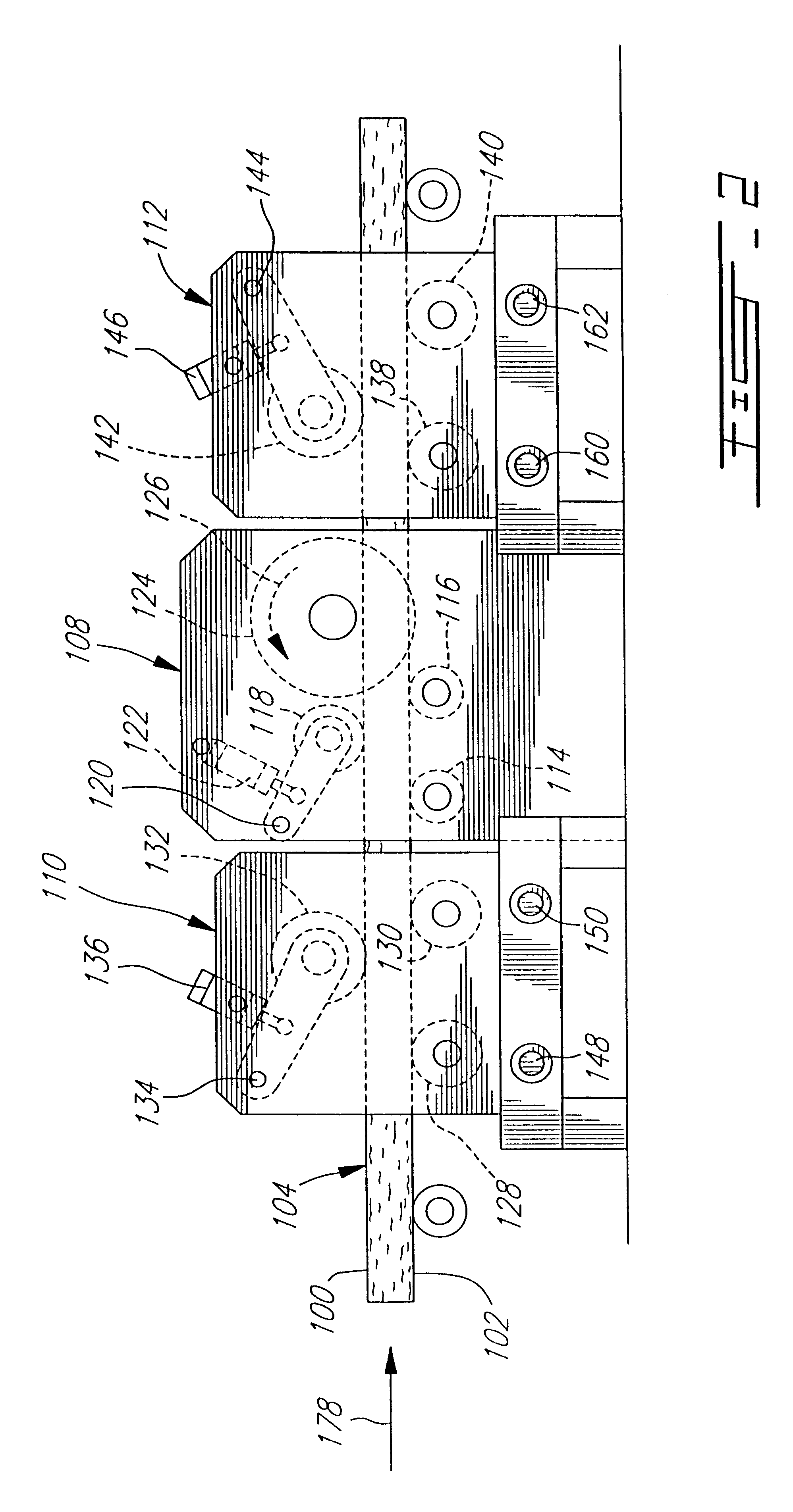Apparatus for controlled curved sawing or cutting of two-faced cants
a technology of curved sawing and control system, which is applied in the direction of feeding apparatus, automatic control devices, precision positioning equipment, etc., can solve the problems of inability to effectively limit the cutting curve, entail important losses in lumber yield, and deformities that alter the perception of the basic shape of the piece by surface deformations, etc., to reduce side thrust and reduce lateral stresses to the cutting elements
- Summary
- Abstract
- Description
- Claims
- Application Information
AI Technical Summary
Benefits of technology
Problems solved by technology
Method used
Image
Examples
Embodiment Construction
The following is a description of the curved cutting control system of the present invention, comprising mechanical components, such as motorized rollers having contact solely with the planar faces 100, 102 of a two-faced cant 104 in order to guide it through either final resawing (FIGS. 1-4) or a squaring off process (FIG. 6), whether in a straight line or along the natural curvature of the piece, as determined by previous dimension and form readings by a scanner 106 (see FIG. 5).
Referring more particularly to FIGS. 1 and 2, a cant resawing embodiment of the present invention is illustrated. Schematically, the embodiment comprises a processing unit 108 disposed between a pair of cant guiding units 110 and 112, respectively located upstream and downstream of unit 108. The latter comprises a pair of stationary lower rollers 114 and 116 and an upper roller 118 which may swing up or down about axis 120 by the action of a cylinder 122. The unit 108 also comprises a series of vertically ...
PUM
| Property | Measurement | Unit |
|---|---|---|
| angle | aaaaa | aaaaa |
| length | aaaaa | aaaaa |
| clamping pressure | aaaaa | aaaaa |
Abstract
Description
Claims
Application Information
 Login to View More
Login to View More - R&D
- Intellectual Property
- Life Sciences
- Materials
- Tech Scout
- Unparalleled Data Quality
- Higher Quality Content
- 60% Fewer Hallucinations
Browse by: Latest US Patents, China's latest patents, Technical Efficacy Thesaurus, Application Domain, Technology Topic, Popular Technical Reports.
© 2025 PatSnap. All rights reserved.Legal|Privacy policy|Modern Slavery Act Transparency Statement|Sitemap|About US| Contact US: help@patsnap.com



